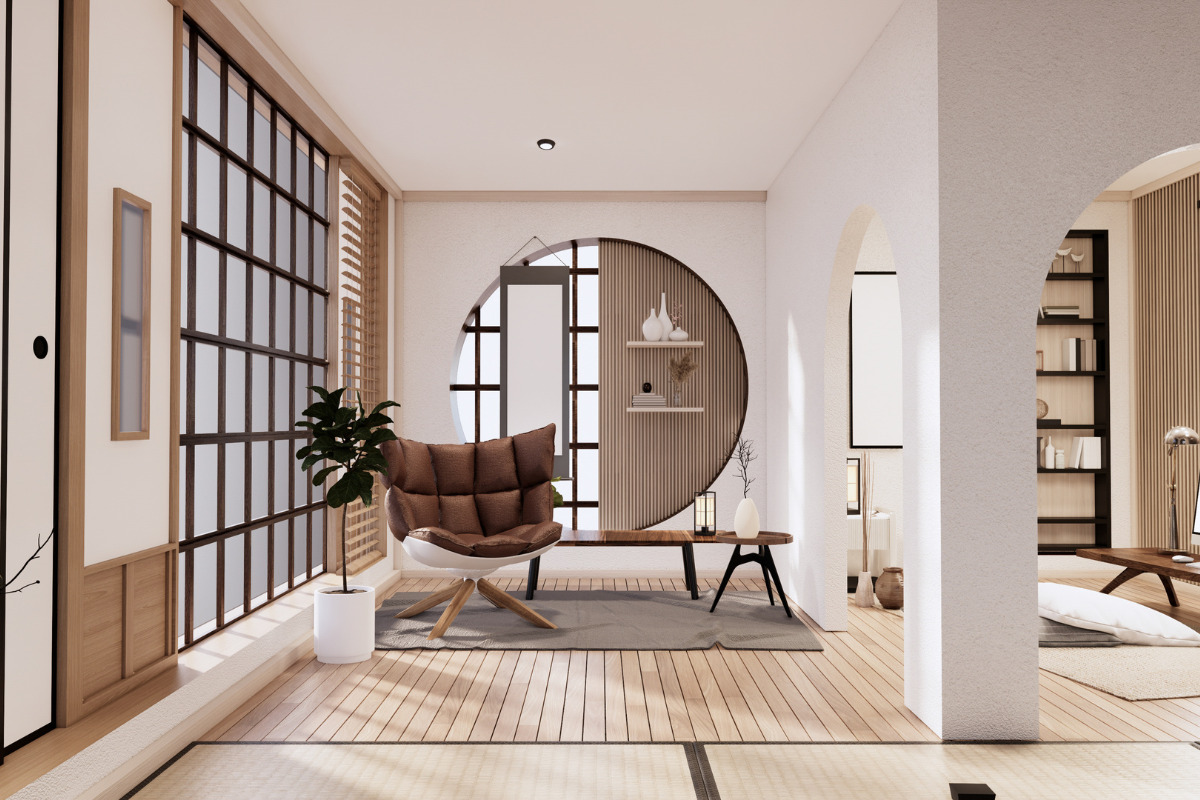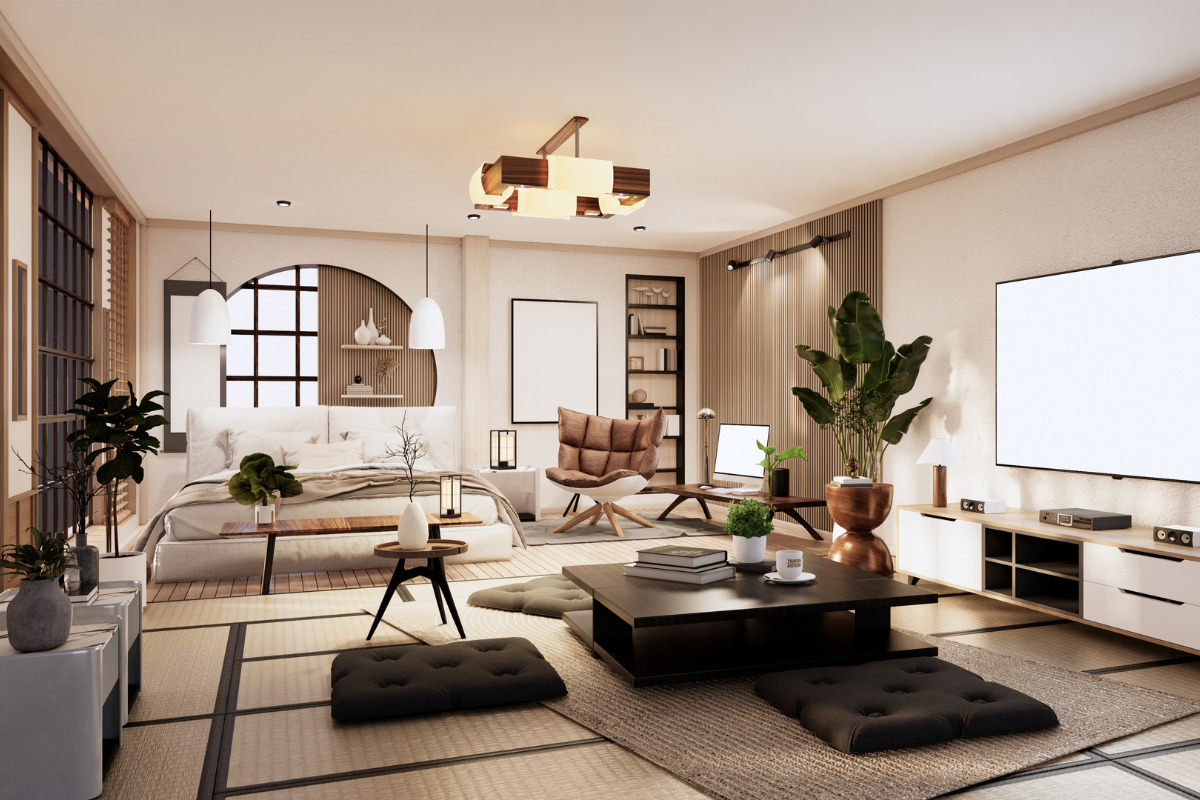
The Window Shoppe November 14, 2023 No Comment
In a world that often celebrates perfection in various forms, Wabi-Sabi interior design can be seen as a refreshing departure from the norm. Rooted in Japanese philosophy and aesthetics, wabi-sabi encourages us to embrace imperfection and see the beauty in the ephemeral.
Applied in interior design, the idea behind wabi-sabi is simple: raw interiors. Allow this design approach to allow nature to shine and bring a sense of peace and tranquility to your own home. Learn how to make your home a harmonious retreat within this interior design perspective.

The Essence of Wabi-Sabi
Wabi-Sabi is the design philosophy that is rooted and hails from Zen Buddhism. This design approach marries traditional Japanese beliefs and culture and the rustic simplicity that’s found in the natural world.
Although wabi-sabi is typically seen as a design philosophy, it goes beyond this. Wabi-sabi is a way of life and it imparts a profound philosophy that can be applied to just about every aspect of living. At its very core, wabi-sabi is characterized by embracing imperfection, finding beauty in the unrefined, ephemeral, and impermanence, as well as living simply and observing minimalism.
In many ways, wabi-sabi shows a unique and refreshing approach to Japanese life and culture that permeates and influences various aspects of life, from interior design to art, and many others. It’s all about integrating design aesthetics that feel and look timeless while still being deeply rooted in the natural world.
Learning How to Integrate the Wabi-Sabi Design Philosophy
- Select Natural Materials
Wabi-sabi draws inspiration largely from nature, often emphasizing the elegance and beauty of organic materials such as stone, wood, and unpolished metals, to name a few. By bringing more natural materials and elements into your home, you can ground your space in nature and create a more calming environment.
Natural materials tend to evolve and develop more character over time. For example, wooden materials, like wooden flooring, develop a rich patina that adds not only texture, but lends a unique appeal to your space.
Besides wooden flooring, you could also incorporate earthy textiles, such as raw silk, linen, or even cotton, in your home. These unprocessed and organic textiles bring their own natural colors and textures that evoke the essence of wabi-sabi.
- Embrace Natural Light
As mentioned, wabi-sabi is all about embracing your connection with nature, so it only makes sense that you highlight natural light in your home as well. One way you can do this is by placing windows that can frame your home and nature’s beauty, allowing it to create a sense of harmony between indoor and outdoor spaces.
Windows has the capacity to let you see the changing seasons and the play of light and shadow in your space. Thankfully, a window replacement fits just right into the wabi-sabi philosophy, especially when it can enhance the natural light in your home.
Not to mention, a window replacement can also fortify your home and ensure the peace of mind you deserve. By opting for natural materials and a simplistic design, you can let your new windows blend harmoniously into the overall design while being practical and energy-efficient at the same time.
- Choose Simplicity in Furniture
Speaking of simplicity, opting for sleek, simple, and minimalist furniture is your best bet when it comes to incorporating wabi-sabi in your interior design. Choose furniture with clean lines, such as wooden or bamboo furniture. These will wear beautifully over the years while still embodying this design philosophy.

- Use Open Shelving and Display
If you intend to display pieces in your home, whether it be artwork or everyday dishes and kitchenware, you might want to use open shelving instead. These provide a more intimate look into your life and add a touch of authenticity to your space.
In the same vein, you might want to stick to handcrafted décor, such as ceramics, particularly those with unique or visible imperfections. You can also bring nature in by adding plants and other natural elements such as stones, driftwood, and the like.
The Bottom Line
Embodying the wabi-sabi design philosophy is possible by following these techniques. By encouraging a departure from the pursuit of perfection and instead, focusing on simplicity, nature, and imperfections, you can keep the principles of wabi-sabi alive in your own home.

